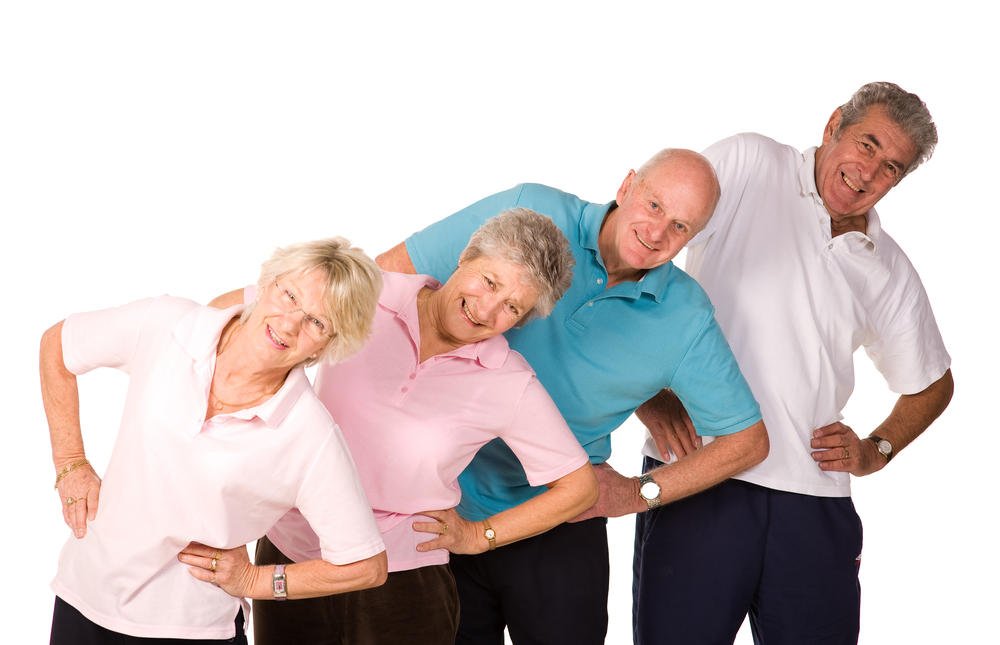Staying active can keep you feeling and looking your best — at every stage of your life. An active lifestyle is especially important for senior health because regular exercise can help prevent heart disease, diabetes, and certain forms of cancer, and it can also reduce pain associated with arthritis. By improving balance, flexibility, endurance, and strength, older adults can stay healthier longer.
Exercise is also a key for cognitive function. Scientists have found that brain neurons- the special cells that perform all the necessary function to keep you alive, as well as help you think and improve your memory- all increase after a few weeks of regular exercise. In fact, some researchers found that when individuals walk three or more times a week, the occurrence of dementia was 35% lower than those seniors who were not involved in any type of physical activity.
What happens to our body as we age?
- Muscle mass decreases -between the third and eighth decades of life, we lose up to 15% of our lean muscle mass, which contributes to a lower metabolic rate, as we get older.
- Balance decreases and falls can lead to fractures. The National Institutes of Health estimates more than one-third of people over the age of 65 fall each year, often resulting in injuries such as hip fractures which are a major cause of surgeries and disability among the elderly.
- Bone density decreases as well and can lead to osteoporosis, a condition in which the bones become fragile and weak, and are more prone to fractures. More than 40 million Americans have or are at risk for osteoporosis, and it is more common in women than in men.
- Osteoarthritis becomes more common – about 31 million people in the U.S. have osteoarthritis, a condition in which the cartilage between the joints breaks down, causing stiffness, pain, and loss of movement in the joints.
It’s never too late to exercise and build muscle. The body is responsive to strength training at any age. Strength training can help reduce symptoms of some common problems we encounter as we age including arthritis, diabetes, osteoporosis, obesity, back pain, and depression. Studies have shown that even a small an amount of strength training can increase bone density, overall strength, and balance. It can also reduce the risk of falls that can lead to fractures.
Some of the key benefits of exercise for seniors are:
- Improved healing and function – Regular exercise by seniors may decrease the time it takes for a wound to heal by 25%. Also, a healthy, strong body can better fight off infection and makes recovery from illness or injury easier.
- Prevention of disease or chronic conditions – According to the National Institute of Aging, exercising as a senior may delay or even prevent diseases like diabetes, cancer, stroke, heart disease and osteoporosis, just to name a few.
- Increased balance and stability – Falls are the number one injury among seniors, and regular exercise can help prevent them. Falling leads to injuries like broken hips or other bones, and exercise is a key component to improve functional reach and balance.
- Improved quality of life and increased life expectancy – New studies have found that seniors who exercise improve not only their physical fitness but experienced psychological benefits as well. Exercise can help alleviate symptoms of depression and improve the mood in general. The increased mobility that comes from regular, moderate exercise can help a senior maintain his or her independence if it is done on a long-term basis. Consistency is more important than intensity.
How Do I Get Started?
Before starting any exercise program, talk to your doctor to find out what activities are right for you. It’s important to start slowly, and build gradually. Doing too much, too soon can result in injury. Even a five-to-ten minute walk is a good starting place, and you can build from there. If you experience any pain or difficulty with these exercises, stop and consult your healthcare provider. If you experience any pain or difficulty with these exercises, stop and consult your healthcare provider.


